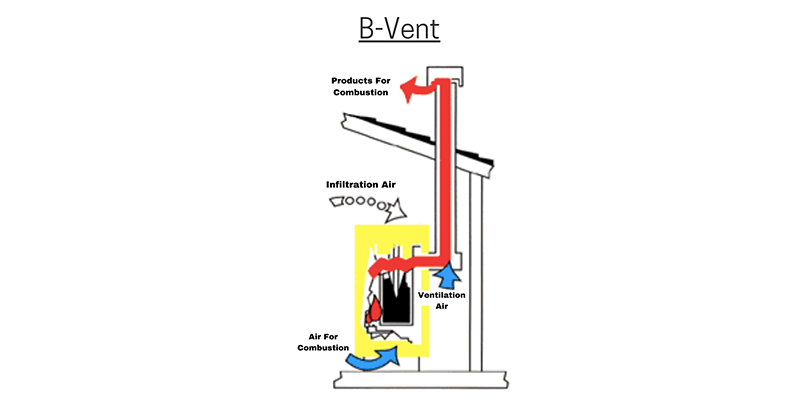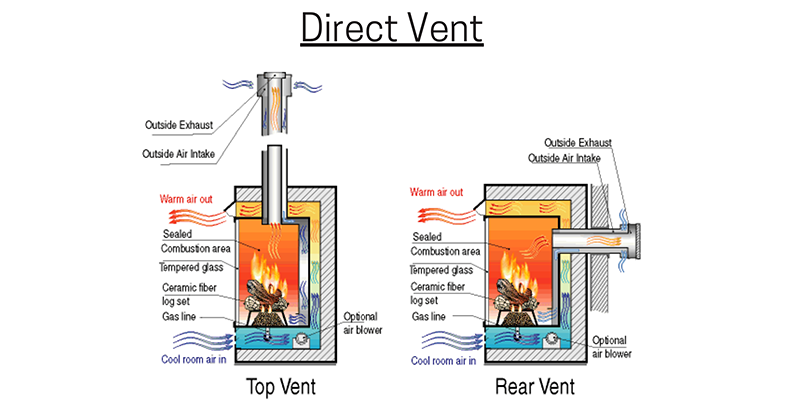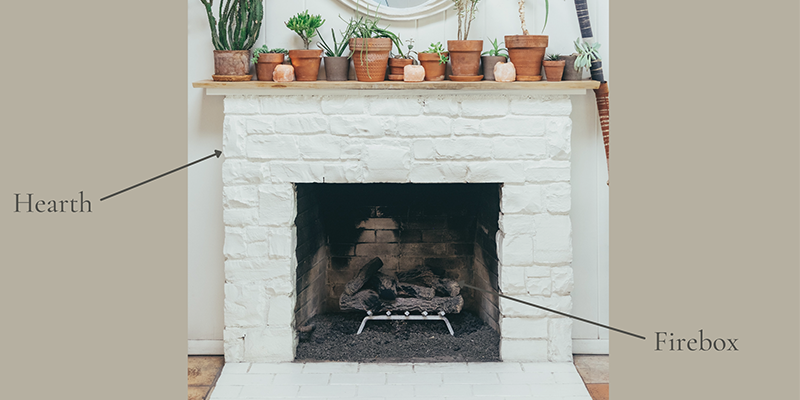Important Terms To Know When Looking For A Fireplace
We’ve all been there, trying to look into something but the terms and lingo sound like a foreign language. We end up leaving more confused than where we started. But purchasing a fireplace doesn’t have to be so complicated.
We’re here to give you the most important fireplace terms to eliminate any confusion and make your purchasing experience that much better. This way, when you come in for your consultation you’ll have some background knowledge to complement your excitement.
No need to worry about remembering any of these terms though! Our sales team here at Stamford Fireplaces are here to help. We will gladly elaborate on anything you need.
A
Ash Dump: Is below the firebox. Using a trap-door mechanism, the ash from the fire falls into the dump for easy removal.
B
B-vent fireplaces (or Natural Vent): Uses air from inside the home to fuel combustion, opposed to direct vent that uses air from outside the house.

Blower: An electric, motor driven fan used for better air circulation in a fireplace.
BTU (British Thermal Unit): Measures the amount of energy needed to increase the temperature of 1 pound of water by 1 degree Fahrenheit.
C
Catalytic Wood Stoves: Opposite of non-catalytic wood stoves. Burns for extended periods of time (overnight in cold climates) or used as a primary heat source in a home.
Chase: A structure enclosing portions of a chimney exterior to the house.
Clearances: Minimum distance between a heat source and a combustible surface (i.e. wood or paper) that must be maintained.
D
Direct Vent: A type of venting system for fireplaces where air for combustion is derived from outside the house. This venting does not require a chimney.

E
Efficiency: The percentage of heat that goes into the room and not up the chimney. An efficient fireplace keeps as much heat in the room as possible.
F
Firebox: The innermost compartment of a fireplace designed to support the combustion of fuel and where the logs are stacked for lighting.
Flue: The passageway in a chimney for conveying flue gases to the outside.
H
Hearth: The surface under and/or in front of the fireplace. Often made of brick or tile.

I
Insert: A fireplace designed to be installed within an existing masonry fireplace opening.
L
Linear: A widescreen format fireplace.
Liquefied Petroleum Gas (LPG): Non-toxic, colourless, odourless gas that is usually found and used in rural areas. Opposed to the natural gas easily accessible in urban areas.
M
Masonry fireplaces: Constructed on site from brick and mortar and are part of the home’s structural design. Typically, these fireplaces and chimneys are built as the house is built.
Media: Media is the decorative pieces used on the inside of an electric or gas fireplace. I.e. Glass pieces, artificial logs, rocks, etc.
N
Natural Gas (NG): Clean-burning fossil fuels available in vast quantities throughout North America.
Non-Catalytic Wood Stoves: Opposite to Catalytic stoves. Only used occasionally as supplementary heat, not the main source of heat.
P
Pilot Light: Small flame used to ignite the main burner.
Power Vent: Uses a fan powered accessory along the vent to increase air exchange, allowing the piping to be longer.
S
Safety Shutoff: A device designed to shut off gas supply if the source of ignition fails.
T
Turn Down Rate: This rate is the difference in BTU on the highest and lowest settings on the fireplace or stove. The higher the turn down rate, the more heat range your fireplace will have.
Z
Zero-Clearance: Different from an insert. Prefabricated factory built fireplace that has the look and feel of masonry fireplace. Normally used in renovations or home building.
Now that you have a better idea of the terms you’ll run into while looking for your new fireplace, check out our products here or book a consultation today!





